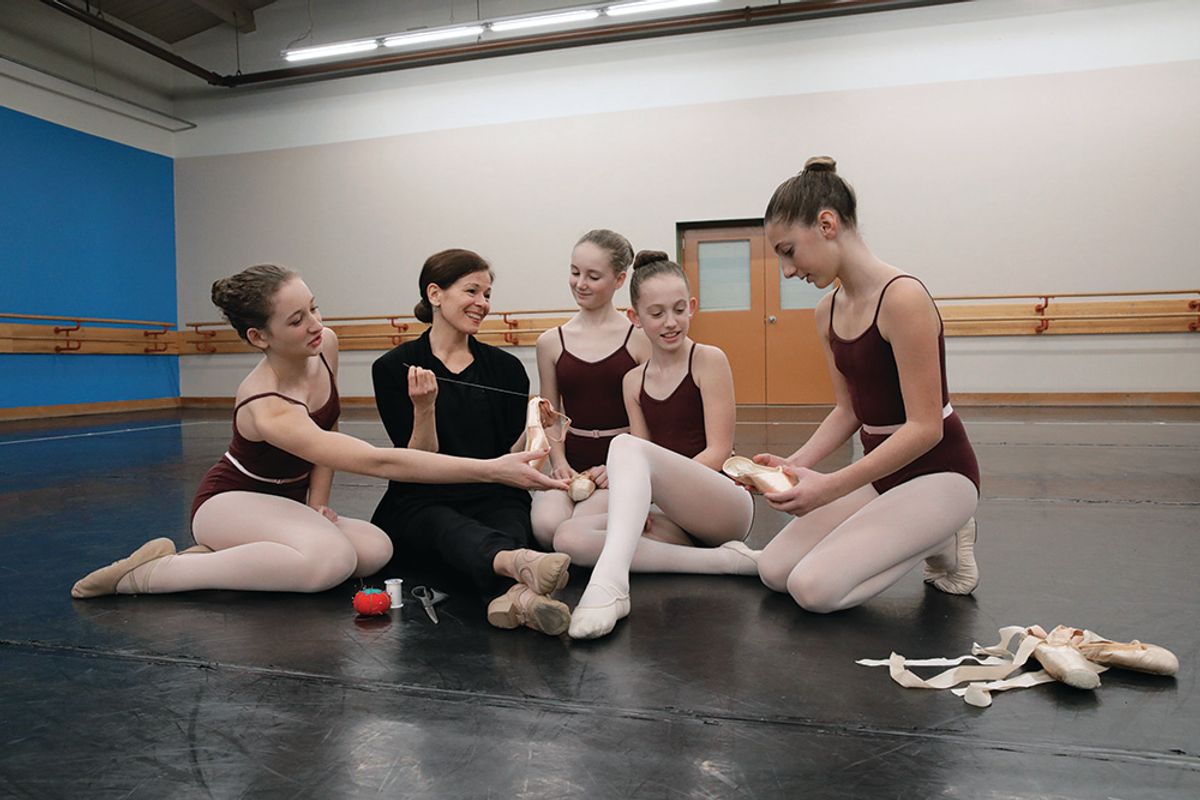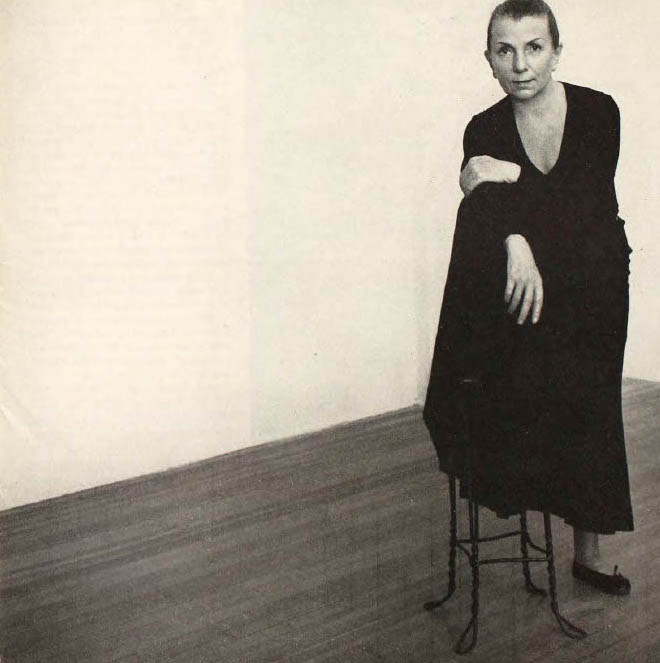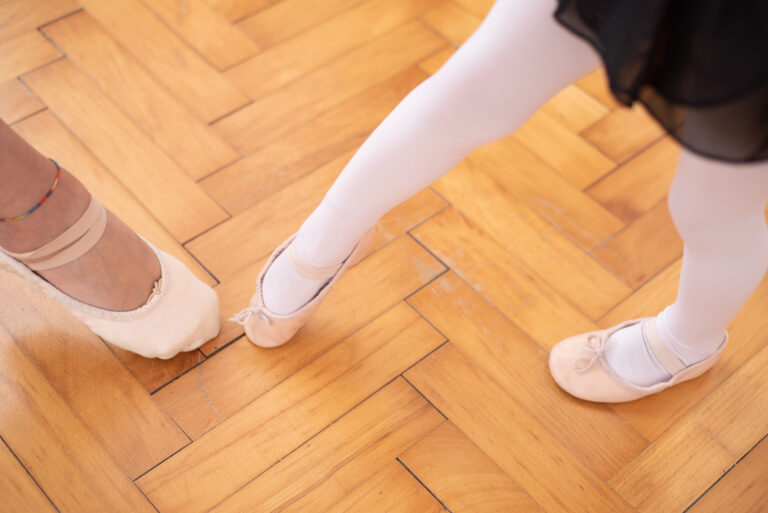
At Michigan Ballet Academy, artistic director Irina Vassileni meets with a group of eager young students and their parents. She holds a shiny new pair of pointe shoes in one hand and an old, worn pair in the other. “I show them all the details, inside and out, and how working on pointe for hours will break down the shoe,” says Vassileni. “I might even bring in different models and talk about how they’re made. Parents need a lot of information to make them feel comfortable about their children going on pointe.”
For girls studying ballet, pointe shoes are a rite of passage. It means they have gained enough strength, control and understanding of classical ballet technique to be considered for this next level of training. For parents, it can be a proud but nerve-racking event that inspires many questions. Teachers can relieve this anxiety by educating families about the investment in time, money and care necessary to support these new pointe students.
Give the Good News—Carefully
Some schools announce this exciting news during a student’s annual conference or midyear evaluation. Other teachers take it one step further by distributing handwritten notes or gathering an entire class together for a special announcement. Vassileni typically starts a new group on pointe in February and schedules a time the month before to meet with the students and families, giving them a brief history of pointework and how the shoes have evolved over time. She then discusses her school’s rules and expectations. “Some parents simply don’t know anything about it, and they think their children will have painful, bleeding toes,” she says. Vassileni will show them her own “blister- and bunion-free” feet as an example of how wearing the correct shoes and working well can prevent injury.
Susannah Israel-Marchese, director of the School of Ballet Hartford, also gives an overview to young dancers and their caregivers and discusses the risks that can be associated with dancing on pointe. “We are up front about the potential for injury, and the cost. It is an expensive venture,” she says. They should know that pointe shoes can range from $80 to $130, depending on the brand, specifications and season.
Provide a Master Fitting
Students should have a professional shoe fitting to ensure a healthy and successful start. Jill Eastwood, master shoe fitter at The Dance Collection in Tacoma, Washington, appreciates when teachers communicate their preferences well in advance. “We want to make sure we’re on the same page,” says Eastwood. “Maybe a student has a particular issue that needs to be addressed, or the teacher has a certain preference when it comes to brand.” If a girl has particularly small or large feet, or flexible arches that need unusually strong shanks, the fitter can also plan to have enough inventory on hand when the student comes to the store.
At the start of each first fitting, Eastwood gives a brief lecture about the importance of good hygiene and foot/shoe care. “Half the time, the student doesn’t hear a word of what I say,” says Eastwood, laughing. “She is glowing and can only think about the shoes. The parents usually ask all the questions.” To make sure dancers get her message, Eastwood created a pamphlet called “Pointe Shoes 101” that goes home with every first pair of shoes. The booklet covers basic foot care, such as reminding girls to trim their toenails and avoid excessive pedicures. Fitters like Eastwood can also be good resources for sewing techniques and padding, if teachers do not have strong preferences in those areas.
Get Them Ready for Class
Once students have their coveted and well-fit shoes, teachers can organize a sewing party or use the first pointe class to demonstrate more preparation techniques. Vasselini teaches students how to use a hammer to make the box softer, where to bend the shank, and how to mold the shoe to make it feel more comfortable. “I also remind the students, and their parents, that they should not wear their shoes at home,” she says. “They could easily go up with the wrong approach, roll toward the little toe and twist their ankle.” This potential danger is just one more reason to have parents included, and educated, in a student’s first pointe experience.




